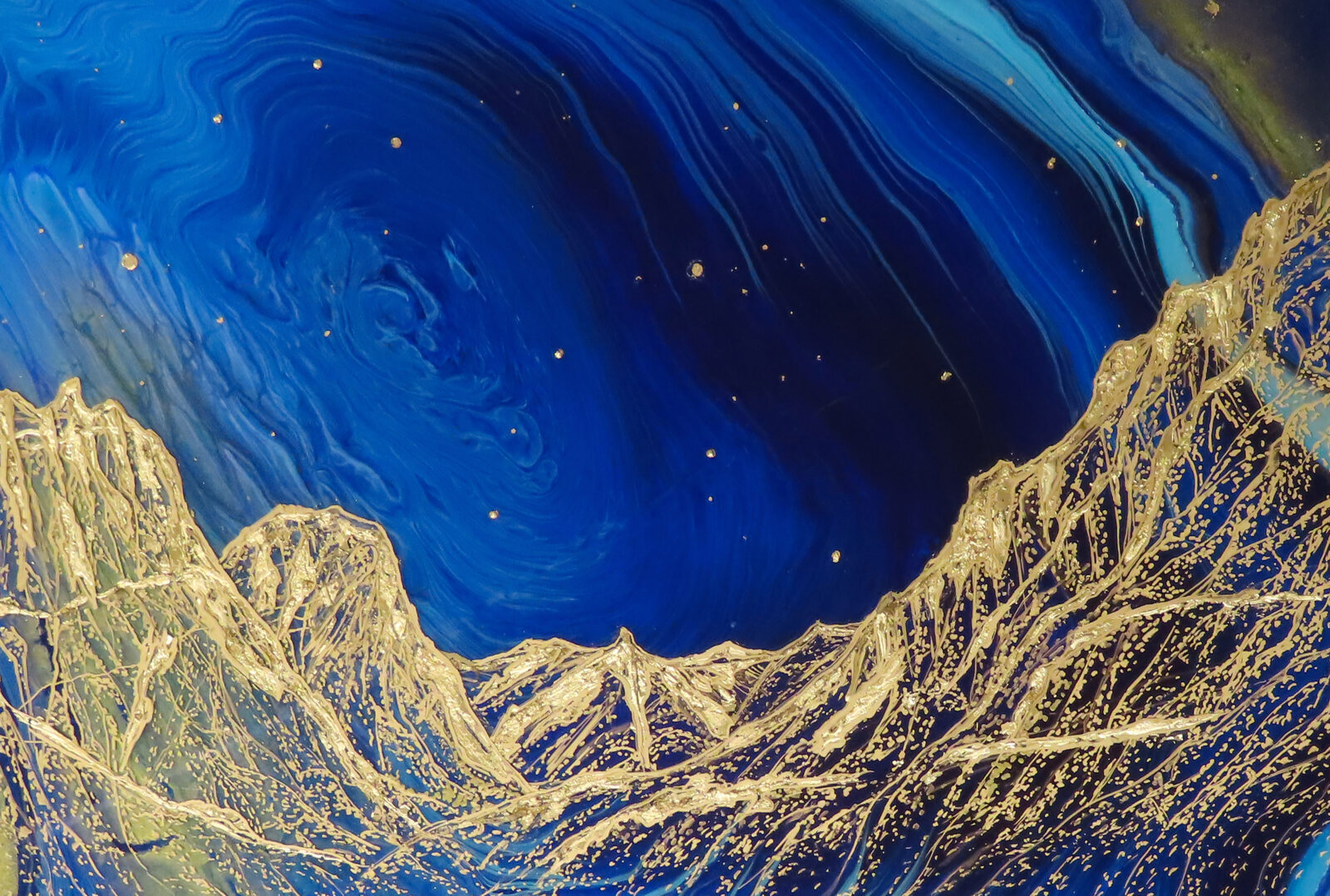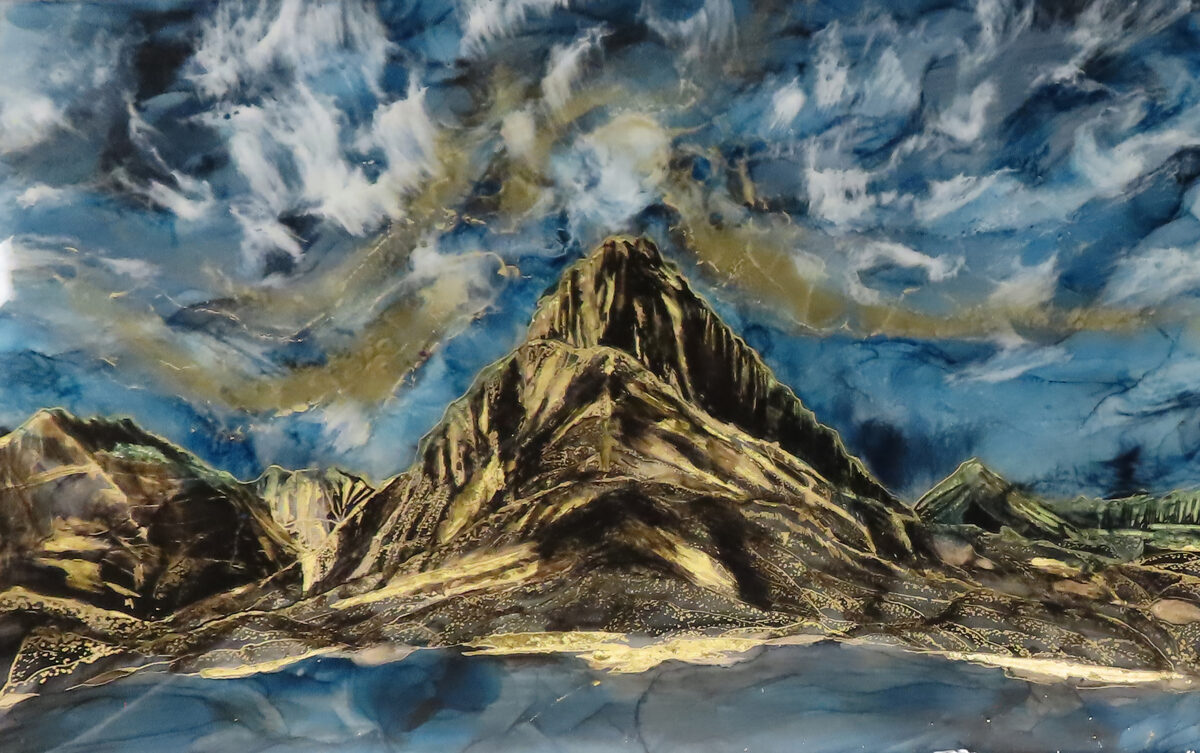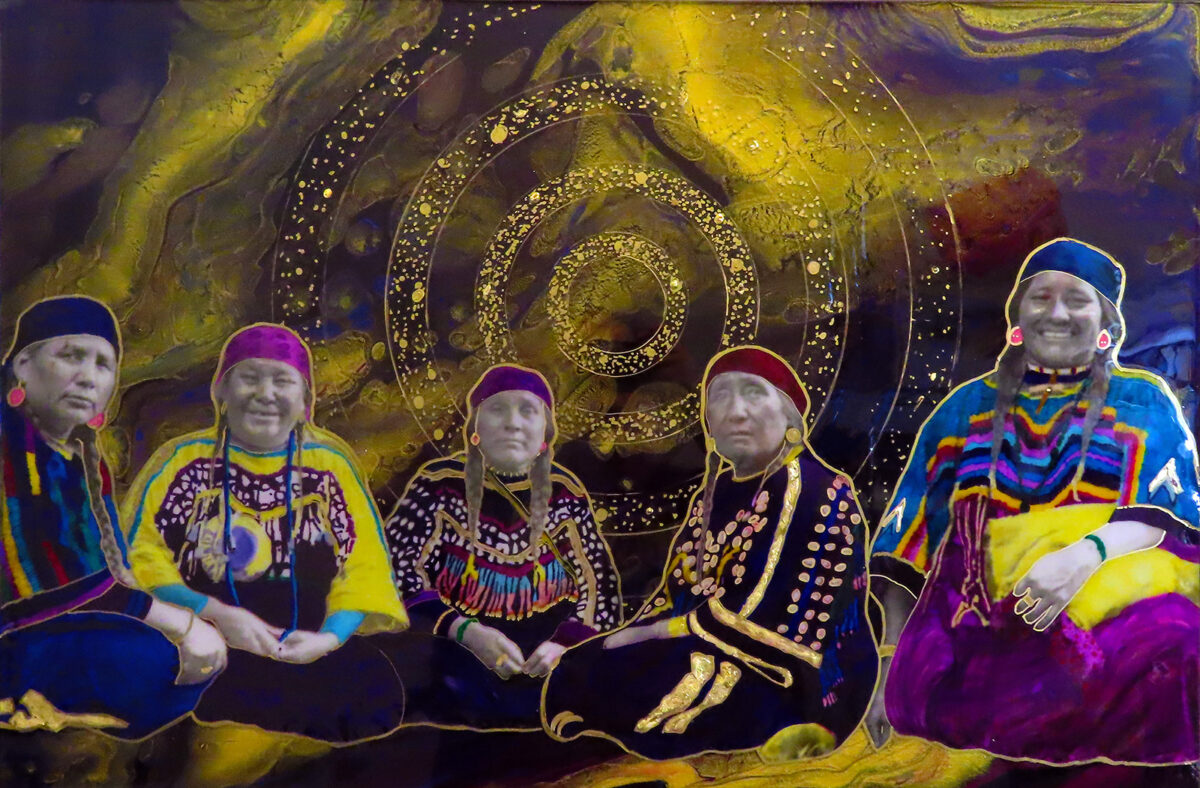Inspired By Heather Cahoon’s Poetry, Glacier Symphony Performance to Feature Original Composition
The time period in which she began writing “Horsefly Dress” was one of pain and questioning for the poet and University of Montana Professor Heather Cahoon
By Mike Kordenbrock
When the poet and University of Montana professor Heather Cahoon began writing the poems collected in her book “Horsefly Dress,” she was working as a policy analyst, and just beginning to venture back into writing poetry after getting a PhD in interdisciplinary studies which involved researching tribal sovereignty and self-governing rights.
At that point she had not written poetry for several years, but around 2016, she began to create poems which used Horsefly Dress, a figure from stories that are part of Salish oral tradition, including creation stories, as a creative muse. Cahoon, who is a member of the Confederated Salish and Kootenai Tribes, would reimagine Horsefly Dress either in contemporary situations, or in those pulled straight from oral tradition. In some cases she would imagine what Horsefly Dress might be thinking, or saying. The book of poetry was written around a theme of reconciling the experience of suffering with its transformative power.
The time period in which she began writing “Horsefly Dress” was one of pain and questioning for Cahoon, who described being motivated by debilitating chronic pain that she was trying to understand. “It affected my ability to work, my parenting, everything,” she said recently.
“I couldn’t understand it, and I think this book was sort of an attempt to make peace with the experience of suffering. And I ended up feeling like it actually served as, like, an initiation period into this whole other mindset that I have now. I don’t want to go back and have that kind of pain. That was not enjoyable. And it was so hard. But now that I’ve come to the other side of that, I actually have a deep appreciation and respect for the pain.”
It was, she said, almost like a rebirth, which she connects to Horsefly Dress’s father, Coyote, who in the stories she knows dies and is reborn again and again. The oral tradition, which tells of Coyote and his daughter, can act as a guidepost, Cahoon said.
“It felt reassuring to be able to turn to them and see, ‘Oh, there’s enough people that have experienced this. Somebody else has already figured this out, that this can be a powerful thing.’ It’s investigating a death — a metaphorical death, and a metaphorical rebirth.”

A couple years ago, Cahoon got an unexpected email about her poems. John Zoltek, the artistic director and conductor for the Glacier Symphony in Kalispell, wanted to meet with her over coffee to discuss her poetry. His wife, Amy, a cellist in the symphony, had been reviewing submissions for a poetry prize she was involved in judging, and had handed “Horsefly Dress” to him, encouraging him to take a look. She was moved by the poems, and suggested he might even want to write music based on the poems.
Zoltek was in the middle of writing a cello concerto at the time, and wasn’t sure about the idea, but after reading he started to imagine how it would work to try and write music in response. That was in 2021. Now, Zoltek’s original music, written around pieces of 15 of Cahoon’s poems and arranged into 11 movements, is ready to debut in front of audiences, in what the symphony is describing as a poem-cycle written for a speaker, solo flutist and orchestra. The piece, according to Zoltek, is influenced by the symphonic tradition, including the composers Debussy, Ravel, Sibelius and Mahler, and also contains elements of folk music, blues, contemporary jazz and world music.
Called “The Hunting Moon,” it will be part of a two-night concert event at McClaren Hall at FVCC’s Wachholz College Center called “Vision Spirit Land,” which will include symphony performances set alongside photo-choreography projected above the musicians, poetry read by Cahoon, a guest flute soloist, and a display of the Missoula-based Indigenous artist Monica Gilles-BringsYellow. The event has been described by the symphony as a an event honoring Native American heritage, and the landscapes of Montana and beyond.
Performances are scheduled for Saturday, Nov. 18 at 7:30 p.m. and Sunday, Nov. 19 at 3 p.m. at the Wachholz College Center.
Kevin KickingWoman, a traditional Blackfeet singer who was recently awarded Montana Teacher of the Year honors for his work teaching Blackfeet language and culture at Browning High School, will open up the concerts by singing two traditional Blackfeet songs. KickingWoman has sung before dignitaries, senators, and even former President Barack Obama.
He said that he knows Cahoon from when they were working together at the University of Montana, and he described her as a helping person, who is always open to sharing knowledge, whether it be about writing, or poetry, or different cultures.
That matches up with how Zoltek described his early discussions with Cahoon over his desire to use her poetry to write music. Not only was he interested in “Horsefly Dress,” but also in her first poetry chapbook, “Elk Thirst,” which includes some poems that she wrote in her late teenage years. The underlying goal, he said, was to honor her experiences as they appear in her poetry, and to interpret, and respond to them with music.
“I asked her, if it’s okay if I rearranged some of the verses, or just used fragments, or left some out because of the musical context,” Zoltek said. “And, of course, she was totally fine with all of that. And then, that was the green light for me. It all felt really right and good. And I started writing.”
As he worked on it, Zoltek said that it began to feel especially personal as he started to consider the history of Native Americans who have lived and continue to live in this part of Montana.
“It’s enriching for me because … even this one project has brought me just a little bit of an understanding, and a bigger awareness of some Native American experiences,” Zoltek said.
While composing “The Hunting Moon,” Zoltek continued to consult with Cahoon, sometimes asking questions about her poems, and other times asking for pronunciation help with Salish words that appear in her poetry. When “The Hunting Moon” is played by the symphony, Cahoon will actually be reading fragments of her poetry as they were arranged for the performance, and the words will be projected onto a screen above the symphony.
Suzanne Teng, a New Mexico-based flute player, will play the Native American flute, and the alto and bass flutes, alongside the symphony, and Zoltek said the way her part is written, it’s a musical representation of the poet’s voice.
“My part has quite a bit of improvisation. So that’s really fun, it’s really exciting,” Teng said.

This won’t be the first time Cahoon has heard music inspired by her poetry. She said that in 2018, her poetry was used to write music for a performance at the Blackfoot Pathways sculpture park. It was, she said, “profoundly meaningful,” an experience she likened to feeling her poetry in a new way.
“I feel so honored that John was inspired to respond like this,” she said of the upcoming Glacier Symphony performance. “And I’m excited to experience it.”
After Kevin KickingWoman sings, the concert will begin with a performance of “Five Variants on Dives and Lazarus,” by Ralph Vaughan Williams, which will be accompanied by choreographed photography slides projected above the musicians. Nicholas Bardonnay, a photographer and multimedia artist who is the creative director for Westwater Arts, a company that specializes in incorporating images into orchestra performances, will be in the audience timing up the changing image projections.
After “The Hunting Moon,” an intermission will take place, and then the concert will conclude with performances of music by Samuel Barber and Antonin Dvorak, also performed alongside photo-choreographed visuals from Bardonnay, before the concert ends with a performance of Dvorak’s 9th symphony.

As part of the event, the artwork of Monica Gilles-BringsYellow will be on display at the Wachholz College center for both performances. Gilles-BringsYellow created the artwork for the Glacier Symphony’s current season theme. A social worker based out of Missoula, Gilles-BringsYellow grew up in Great Falls, and has lived on and off the Flathead Indian Reservation.
Gilles-BringsYellow said that growing up, her father used to take her to art galleries, and that she had long been interested in art, and making art, before she began to teach herself how to paint in 2019. She described her artwork as a sort of 3-D collage, in which resin, inks, and acrylic, are layered with gold leaf accents, in many cases around charcoal portraits of Indigenous women.
“I am trying to connect people and place, and that is always what I am doing in my art,” Gilles-BringsYellow said. She added that her art also aims to depict the human side of Indigenous people, and that she makes an effort to identify and describe the people featured in her art. It’s something she sees as a contrast to some of the historic depictions of Indigenous people in which they are shown without names, or even without tribal affiliations.
“That gets kind of re-shared over and over in our culture, in American culture, and the internet. And it almost makes it seem like they’re interchangeable, and you lose the person, the humanistic side of this person. They had a tribe, they had a connection. They had a family,” Gilles-BringsYellow said.
For more information on Vision Spirit Land, including to purchase tickets, go to https://www.wachholzcollegecenter.org/glaciersymphony/Online/default.asp or glaciersymphony.org.